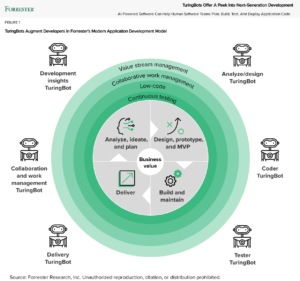The Evolution From Continuous Automation Testing Platforms To Autonomous Testing Platforms: A New Era In Software Testing
The software testing landscape is undergoing a seismic shift. For years, continuous automation testing (CAT) platforms have been the gold standard for reducing manual testing and ensuring comprehensive coverage across diverse environments. But with the advent of generative AI (genAI) and large language models (LLMs), we are entering a new era: the rise of autonomous testing platforms. This transition is not just timely — it is necessary to address the challenges posed by AI-driven development and the accelerated pace of modern software delivery.
From Continuous Automation Testing To Autonomous Testing Platforms
CAT platforms have long been defined by their ability to streamline testing processes, offering scalable automation tools that integrate seamlessly into DevOps pipelines. These platforms have been instrumental in reducing the complexity of testing, especially in enterprise environments where applications span multiple channels, technologies, and packaged environments. But CAT platforms have struggled to move the industry beyond 23–25% of automated tests to significantly higher percentages of automation.
In addition, as software development evolves, so do its demands. The integration of AI in development has introduced new challenges that CAT platforms are not equipped to fully address. Generative AI tools are enabling developers to produce code at unprecedented speeds, while AI-powered business applications are generating outputs that can be plausible yet incorrect (hallucinations). These shifts necessitate testing platforms that go beyond automation — platforms that are intelligent, adaptive, and capable of augmenting human testers in tackling AI’s complexities.
Enter autonomous testing platforms, which are powered by AI and infused with genAI capabilities. These platforms leverage what Forrester has coined “tester TuringBots,” advanced AI tools (aka agents) that augment testers’ productivity and effectiveness. Tester TuringBots bring intelligence and adaptability to the testing process. This enables organizations to test faster, handle larger volumes of code and functional requirements, and address the unique challenges posed by AI applications.

Why Is This Transition Happening Now?
From a research perspective, the timing of this transition is ideal. The convergence of several factors has created the perfect storm for the adoption of autonomous testing platforms:
- Generative AI in development. Developers are increasingly using genAI tools to write code, accelerating productivity and creating a need for testing platforms that can keep pace.
- The proliferation of AI applications. Businesses are deploying AI-driven applications that leverage LLMs and genAI, which require specialized testing to address issues such as hallucinated outputs and complex behavior.
- A shift to faster delivery cycles. Continuous delivery pipelines demand faster and more accurate testing to avoid bottlenecks in the development process.
The integration of AI into testing platforms represents the logical next step in addressing these challenges, enabling organizations to scale their testing efforts while maintaining accuracy and efficiency.
The era of autonomous testing platforms will likely dominate the software testing landscape for the next five years or more. As AI continues to permeate every aspect of software development and business applications, the need for intelligent, adaptive testing solutions will remain high. As technology evolves, however, we may eventually see the emergence of even more advanced platforms — perhaps driven by self-learning AI or quantum computing — that redefine testing once again.
Research Milestones: What’s Next?
I am making several updates to my Forrester research. This week, I am launching “The Autonomous Testing Platforms Landscape, Q2 2025,” which is replacing The Continuous Automation Testing Platforms Landscape, Q3 2022. Similarly, I am evolving The Forrester Wave™: Continuous Automation Testing Platforms, Q4 2022, into “The Forrester Wave™: Autonomous Testing Platforms, Q4 2025.” These updates aim to provide you with deeper insights into whether your current testing partner — or a potential new one — has the capabilities to support emerging use cases and deliver required functionality. This new research promises to offer valuable insights into existing and new testing platforms shaping this exciting transition.
Final Thoughts
The evolution from continuous automation testing to autonomous testing platforms represents a paradigm shift in software testing. By embracing AI and genAI-infused tools such as tester TuringBots, organizations can tackle the growing complexity of modern development while maintaining speed and accuracy. This transition is not just a technological upgrade — it’s a strategic imperative to ensure that testing keeps pace with the rapidly changing world of software development.
Here are some of the criteria I am thinking will make autonomous testing relevant: web and multiple-device-type UI test automation, model-based automation, keywords, behavior-driven-development test case design, test case scripting and/or coding, change analysis, natural language tests and interfaces, test agent creation and orchestration, test agent administration, monitoring, management, quality-assurance AI accuracy, hallucinations, bias, retrieval-augmented generation pipes, agile planning and DevOps platform integration, cloud browser and device lab testing grids, performance and benchmark testing, test data and insights for enterprise/team reporting, API testing, test data management, and software-as-a-service and on-premises business process testing.
Are any capabilities missing that you’d expect to see in autonomous testing? Reach out to me at dlogiudice@forrester.com, and I’ll be happy to refine my list.
The future of testing is autonomous, and the journey begins now …
